Catching stripers is always fun, but catching stripers in "skinny" water is more fun. I would be hard pressed to find a more thrilling scenario, than seeing a nice bass in just a couple feet of water, and then casting to that bass, and watching that bass engulf the bait right before my eyes.
I have enjoyed fishing for skinny water stripers since I was a youngster. In this post I want to share with you five simple tips I feel will help in your own pursuit of shallow water bass.
1) "Match The Hatch" With Soft Plastics
The predominant bait fish in most skinny water areas is the abundant sand eel. These slender minnows bury themselves in the sand as individuals, and also travel in vast schools.
Striped bass on Cape Cod eat a lot of sand eels throughout the course of the summer. One of the best ways of fooling bass when they are zoned in on sand eels, is to use soft plastic baits and flies.
Slug-go's have been a long time favorite of mine and I would recommend carrying a few when you go fishing over the flats, or in any skinny water situation.
Six inch long black and grey Slug-go's fished weightless on or just beneath the surface are my typical go-to. Other fishermen swear by other colors, so it can pay to experiment.
Hogy lures would also be a good choice. Hogy's are also soft plastic baits which do a phenomenal job of imitating sand eels.
2) Go With The Light Gear And Tackle
Bass are notoriously finicky and difficult to fool when they are feeding in shallow, clear water. This is especially true on those hot, bright and sunny days, like the one pictured below.
I feel you will increase your odds by using a light tackle spinning setup. A 7 foot rod and reel loaded with 20 pound braid connected to a long section of 20 pound fluorocarbon is a good bet. Or you could go the traditional route and spool up with 15 pound mono-filament.
Whatever you choose, in most scenarios the light setup is best because you'll be casting light lures. Light setups are easier to walk around with too, and when fishing sandbars I always find myself doing plenty of walking. Casting distance is also typically not as important as say fishing the Canal or the beaches of Outer Cape Cod.
Big bass do venture into skinny water and I have heard of fish as large as 48 pounds being pulled from Cape Cod's shallow water tidal pools. So definitely be sure to have enough line packed onto your reel to withstand a drag blistering run from one of these rare cows, if by chance you happen to hook one.
3) Don't Be Afraid To Use Live Or Freshly Dead Bait
Most folks will use artificial lures when fishing skinny water areas. However if you take a look around while out on the sandbars, you will notice a variety of natural bait options.
Right now during the spring, chunks of mackerel can work well on keepers, when fished over various sandbars throughout Cape Cod Bay.
Fresh dead sand eels work wonders when fished in these areas too. Some sharp anglers I know will rake their own sand eels, then impale 3 or 4 onto a hook and cast them into fishy sections of water.
The most important thing here is the freshness of the bait. Sand eels that are raked and then immediately fished with, far outproduce the frozen variety.
You may also encounter crabs while wading around in the shallows. Striped bass, especially large striped bass, eat and target crabs with abandon.
You will also find sea clams on the flats. Sometimes you may see the valve of a clam popping up through the sand. You can dig up a clam, pry it open, and use the clam as bait.
4) Bring A Good Pair Of Polarized Sunglasses
One of the best parts of fishing skinny water areas is seeing the bass cruising in the shallows.
When bass spend a lot of time in these shallow areas, they will actually take on a much lighter colored hue. The fish begin to blend in and camouflage themselves against the white background of the sand. It is quite amazing how they do this.
The glare created by the suns' rays refracting off tidal pools and flat white sand flats adds to the challenge of spotting these already easy to miss stripers.
A good pair of polarized sunglasses can save your retinas, and also make it much easier to spot a nice fish as it moves and feeds in the shallows.
5) Be Aware Of The Tide And Weather At All Times
In certain areas on Cape Cod the tide can drop and rise 1 foot every 15 minutes. It is very easy to get yourself into a boatload of trouble if you aren't aware of the current tide and weather conditions.
Play it safe and don't be tempted to wade out anywhere, or venture to some far off sandbar, when you are feeling unsure about the situation. Keep an eye on the sky too, because if a thunderstorm rolls through you really have zero cover when out on a sandbar.
Fog is the most disorienting of all weather conditions, which is why a compass is mandatory equipment. Even if you are just 100 yards from dry land and become enveloped in a notoriously thick Cape Cod fog bank, it can be a serious challenge finding your way back to shore without the aid of a compass.
The best tip I can provide you is to play it safe and always err on the side of caution.
The Latest Cape Cod Flats Fishing Report
If you've made it this far into this post then I am going to assume that you are highly interested in catching a nice striped bass in skinny water.
Just this week I ventured out onto the flats of Cape Cod and found striped bass feeding with abandon throughout the shallows. I even caught glimpse of bass in the 35 inch range, calmly cruising in 2 feet of crystal clear water, which is always exciting!
You can read the details of what happened during that trip by clicking here
What do you think? Let me know by commenting below.
Tight lines and take care,
Ryan

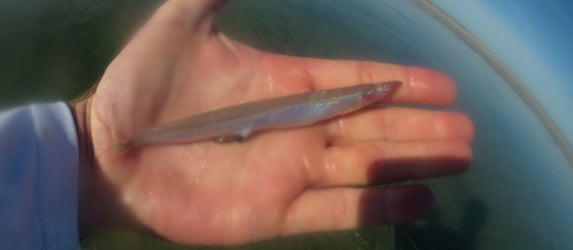
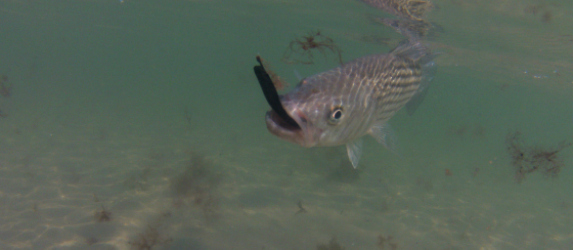
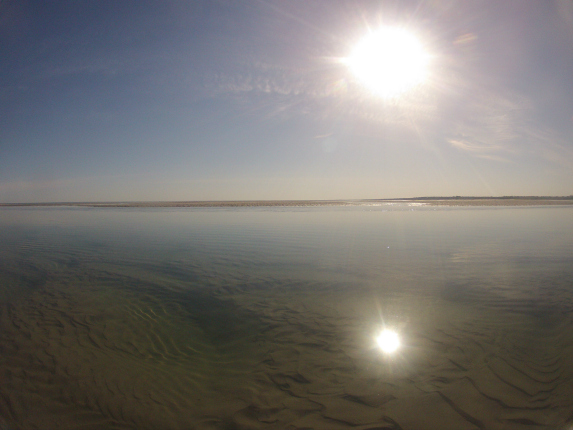
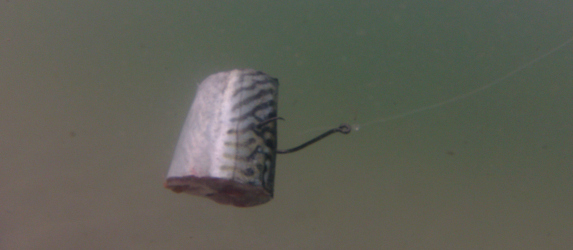
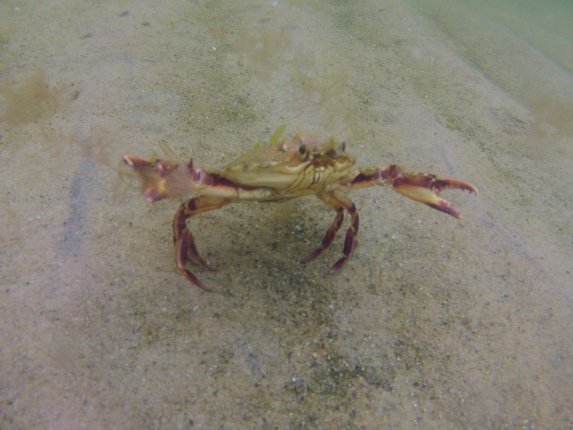

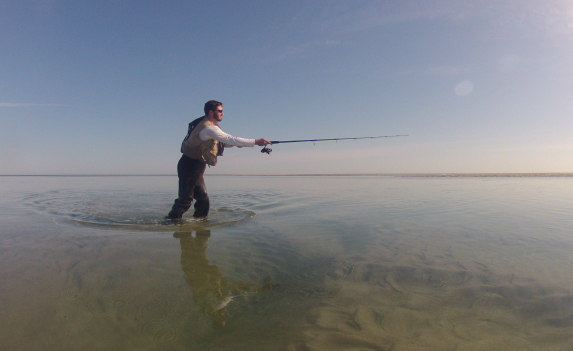
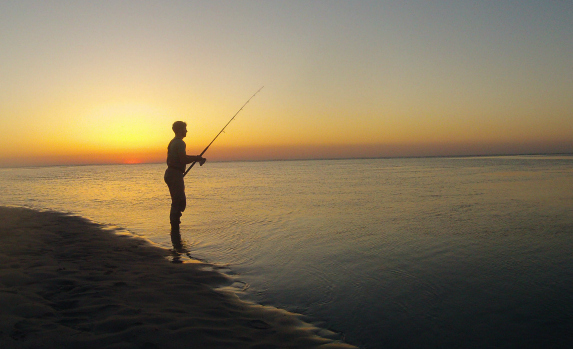


I your previous post you talked about using a “small” sebile lure … what size is the small?
Hi Jeff! I was referring to either the 5in or 6.5in versions sebile magic swimmer versions.
Can you detail the following:
1) how to rig a crab on a hook
2) how to “rake” sandeels
Thanks
This year I am going to try using a small elastic band to rig the hook to the crabs claw, because I feel it will do less damage to the crab and he will stay alive longer. Last year I hooked the crab as in this photo https://myfishingcapecod.com/wp-content/uploads/2013/06/crab.jpg
For the sandeels, find an area where you are scaring the sand eels from the sand with your feet as you walk. Think of cuts between sandbars during low tide, tidal pools, channels between bars, that sort of thing.
Check out the Ribb Sand Eel Rake on this page http://www.ribbrakes.com/recreational.html
You basically impale the sand eels with the rake, and then use them as freshly dead/sorta still alive bait.